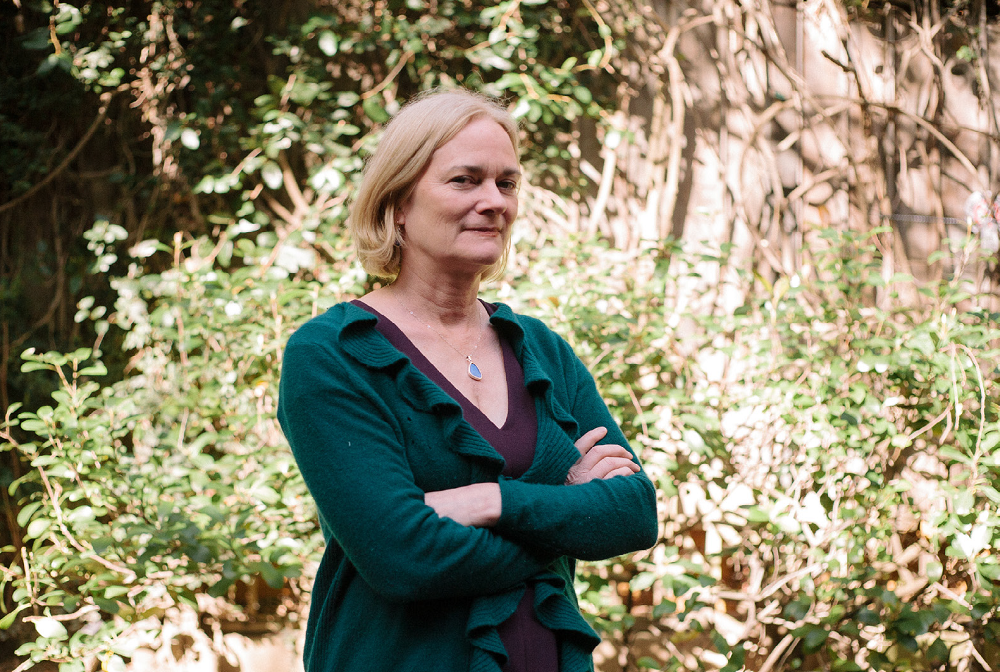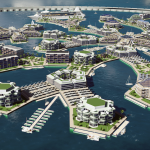RELATED: Weakened Law Shifts Sea Rise Cost to Cities
In 1995, the Diablo Valley Ranch, a drug rehab facility in Contra Costa County, planned to expand. The problem? According to neighbors, the land it wanted to build on was contaminated with oil and toxic chemicals.
The company made what was then an obscure argument: The California Environmental Quality Act, known as CEQA, the state’s premiere environmental law, did not require developers to consider how the environment might influence its project, only how the project would affect the environment.
Today, developers are using the same reasoning to push back on the ability of Bay Area cities to regulate waterfront development and protect residents from rising sea levels, a product of human-caused climate change. Over the last two decades, as developers won over judges in more and more state courts, lawyers began peppering these phrases in environmental impact reports, lawsuits and responses to public comment.
January 1995: RULING
Baird v. County of Contra Costa; Bi-Bett Corporation — The Court of Appeal rules that Contra Costa County does not have to address existing soil pollution in a land-use decision. The case contradicts previous rulings and is largely ignored for more than a decade.
“The purpose of CEQA is to protect the environment from proposed projects, not to protect proposed projects from the existing environment. CEQA is implicated only by adverse changes in the environment”
November 2008: ACTION
Call for Sea Rise Plan Coordination — Gov. Arnold Schwarzenegger issues an executive order directing state agencies to plan for sea level rise.
July 2009: RULING
City of Long Beach v. Los Angeles Unified School District — The Court of Appeal rules that school officials are not obligated to account for existing air pollution from a nearby highway when deciding where to put a new facility.
“We digress first to make the point that generally, the purpose of an environmental impact report is to identify the significant effects on the environment of a project not the impact of the environment on the project, such as the school’s students and staff.”
June 2011: RULING
South Orange County Wastewater Authority v. City of Dana Point; Makar Properties LLC — The Court of Appeal rules that a proposed mixed-use development cannot be blocked on account of pollution emanating from a nearby sewage treatment plant.
“The argument is that the environment needs to be cleaned up to make it suitable for the project, rather than vice versa … The Legislature did not enact CEQA to protect people from the environment…”
October 2011: ACTION
San Francisco Bay Plan — The Bay Conservation and Development Commission updates sea level rise findings and policies. Shoreline developers will now be asked to base their climate change analysis on consensus science
November 2011: RULING
Ballona Wetlands Land Trust v. City of Los Angeles; Playa Capital Company LLC — The Court of Appeal rules that a developer seeking to build condominium and commercial space on a wetland does not have to address “impacts relating to sea level rise as a result of global climate change.”
“But identifying the effects on the project and its users of locating the project in a particular environmental setting is neither consistent with CEQA’s legislative purpose nor required by the CEQA statutes…”
January 2012: ACTION
Facebook Campus Project — In applying for permits for a new 22-acre campus in Menlo Park, the social media giant faces criticism from environmental groups, regional agencies and the neighboring city of East Palo Alto, centered on inadequate planning for sea level rise. The company responds to most of the comments with boilerplate language from recent court cases saying it is not responsible for protecting the property from climate-induced flooding.
“CEQA requires an analysis of the effects of a proposed project on the environment…the purpose of an EIR is to identify the significant effects of a project on the environment, not the significant effects of the environment on the project…”
March 2012: RULING
No Wetlands Landfill Expansion v. County of Marin et al., Redwood Landfill Inc. — The Court of Appeal green-lights the expansion of Marin County’s largest garbage dump. The court says it trusts the company to review levee improvements every five years for the remaining life of the landfill.
“… EIR had no duty to analyze or mitigate the environment’s effect on the project (as opposed to the project’s effect on the environment). But Ballona Wetlands is distinguishable because, although the EIR may not specifically say so, future sea rise here presumably would not only impact the project but would also impact the environment by contaminating waterways]…”
June 2012: ACTION
West Coast Sea Rise Study — The National Research Council publishes a comprehensive study of how sea level rise will affect California, Oregon and Washington. The intention is for city planners to use the information as a tool for long-range planning.
July 2015: ACTION
Report on Waterfront Building Boom — Comparing scientists’ predictions with land-use permits from around the Bay Area, the Public Press finds that builders are investing more than $21 billion in new shoreline development.
December 2015: RULING
California Building Industry Association v. Bay Area Air Quality Management District — The California Supreme Court rules that the intention of the California Environmental Quality Act is to protect the environment, and does not apply to the effects on people or property from future climate change. California and local officials acknowledge that it will be hard to require developers to anticipate climate change effects such as sea level rise.
“In light of CEQA’s text and structure, we conclude that CEQA generally does not require an analysis of how existing environmental conditions will impact a project’s future users or residents.”
March 2016: ACTION
San Francisco Sea Level Rise Action Plan — San Francisco adopts guidance documents for addressing the threat of sea level rise for all public facilities and outlines objectives for coastal flood planning and mitigation.
October 2016: ACTION
General Plan, City of Menlo Park — Menlo Park releases a general plan covering a wide variety of goals including land use, transportation, utilities and public investment. One commenter recommends the city “detail the number of residential unites and amount of nonresidential square footage that would be added in areas prone to sea level rise,” but the city responds that it is no longer obligated to do so.
“…Per the recent California Supreme Court decision in the California Building Industry Association [CBIA] v Bay Area Air Quality Management District [BAAQMD], issued December 17, 2015, the environment’s effect on a proposed project, which includes sea level rise, are not considered impacts under CEQA unless the proposed project would exacerbate an environmental hazard…”
November 2016: RULING
Mission Bay Alliance v. Office of Community Investment and Infrastructure; Golden State Warriors Arena LLC — The Court of Appeal rules in favor of the Golden State Warriors basketball team in its application for a $1 billion development including a sports arena and office complex. The legal challenge had focused on the effects on traffic and wind patterns, mentioning sea level rise only parenthetically.
“Defendants argue correctly that CEQA does not require analysis of the wind impacts on the project. “[T]he purpose of an FSEIR is to identify the significant effects of a project on the environment, not the significant effects of the environment on the project.”
December 2016: ACTION
San Francisco’s Natural Resources Management Plan — The City of San Francisco, which owns a golf course and natural area in coastal San Mateo County, issues a wide-ranging parks management plan calling for keeping the level of wetlands artificially stable. In comments, the Sierra Club objects that the proposal “will lack any resiliency in the face of increased climate stress and inevitable sea-level rise.”
“The purpose of an EIR is to provide public agencies and the public in general with detailed information about the effect which a proposed project is likely to have on the environment.”










